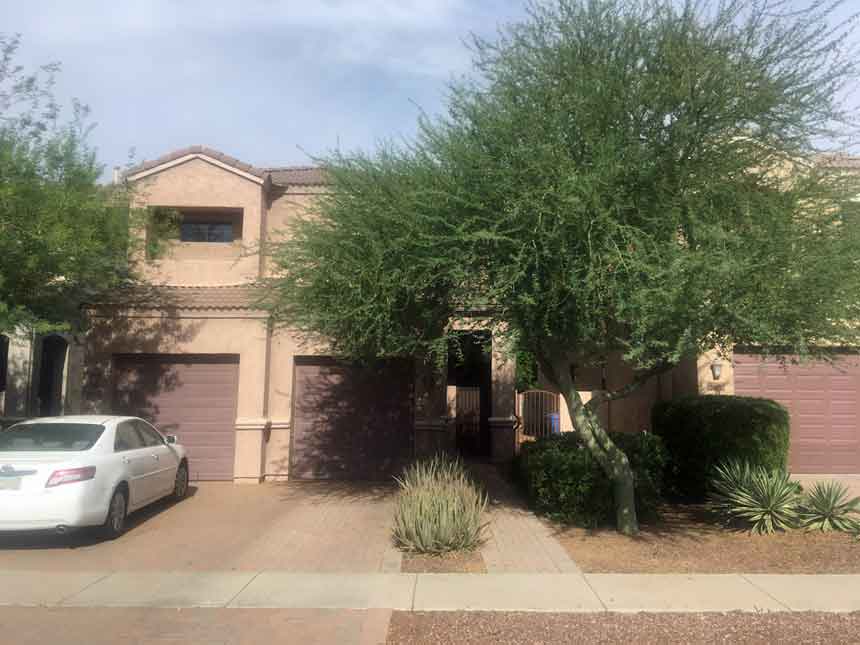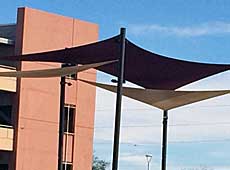Last Updated:April 27, 2024
Can you use a tarp as a sail shade

A tarp is not a sail shade. They are both large fabric rectangles with holes in the corner; however, they are not interchangeable.
The tarp may be the perfect camping accessory, but it’s not meant to be used as a sail shade for your boat or sailing vessel. It will most likely tangle up in knots and cause you more problems than it’s worth. There are many other products available on the market that are made specifically for this purpose. The tarp is best left as a fabric that will be laid on the ground and tied down.
It doesn’t contain the structural integrity needed to resist rips or tears from being a sail shade.
The GSM difference of Tarps and Sail Shades
GSM stands for grams per square meter. It is the weight of the one square meter of the fabric. The bigger this number, the heavier the fabric and more structurally sound it is.
A regular tarp will have a GSM around 90. This will make them incredibly easy to tear or rip. They will also develop holes if something pointy is blown into them. A regular strength tarp would last a matter of hours or days used as a sail shade.
A heavy duty tarp will be 120 GSM which is suitable for something that is always on the ground. It won’t be pulled in different directions, and it just needs to not develop holes or rips when something falls on it. Barring any storms, a heavy duty tarp could be used days or weeks before tearing. This may be a suitable option as a last record for camping or in an emergency.
The entry level sail shade will have a GSM of 150, and this is the absolute minimum that we’d ever consider. This will be thick enough fabric to be hung in the air and be strong enough not to start ripping. A 150 GSM tarp will a couple of seasons when taken proper care of.
These budget sail shades cost around $10 more than the heavy duty tarps so it really doesn’t make financial sense to scrimp on the initial purchase price since it will last a tiny fraction of the time.
At GSM 180, you are getting into good quality sail shades. These are built to last and you can feel comfortable hanging them.
Tarp Connectors vs Sail Shade Connectors
These grommets are not designed to support a high level of tension. They are designed to hold the edges in place from moving, and that’s about their limit. If you were to connect these to a bracket or support pole, they would just pull through the end before the day is out. The grommet is much better solution than just cutting a hole in the fabric and tying it through that, but they are not designed to spread the load over the large area.
Sail shades have a D ring connector that is then sewn via a webbing over a large area of the sail shade. This more even spreads the tension over a much larger area. The area of the webbing could be 10x or 20x that of the simple grommet, and the pulling force will be reduced by that much.
How much wind can a sail shade tarp withstand?
Tarps are not designed to be hung from their corners with tension. As such, the amount of wind they can withstand is minimal. Even small gusts of wind will lead to the grommets tearing from the corner.
We’ve written a complete guide to sail shades and wind, but when it comes to tarps just assume they are working at their maximum capacity on a completely clear sunning day.
Stitching in Tarps vs Stitching in Sail Shades
Tarps are single or double stitched depending on the quality. We have a very cheap tarp under our bunny cage to protect the floor. It doesn’t need to be strong or tear resistant. Just something that is waterproof that our little bunny won’t eat. We picked up an 6′ x 8′ tarp like this for $5 at Walmart.
Heavy duty tarps are going to be double or triple stitched with a heavier thread. They will run you about double the price of the cheap tarps, but they will last much longer. This is good if you are going to keep them outside or need them for long-term protection.
The switch for sail shades, even the least expensive, is far, far more secure than tarps. They are designed to provide support and not tear when the fabric is held under tension for long periods of time. Tarps are not designed to standup to prolonged tension, and the won’t.
Use a metal support bracket when attaching a sail shade to your home
When you attach the connector via a single screw, you are creating a single point of failure. This also means that all the force is pulling against this lone screw. By using a bracket that is held in place by 4 or 6 screws, you are dividing the on the connection.
Remember sail shades are primary composed of a fabric sail. They are designed to catch wind and use that energy for movement. By anchoring the corners down, you are putting the force of the shade against the strength of the bolt or screw holding it in place.
Wrapping up
That’s it for this post, and thanks for the question. This came from one of our readers who asked us if we thought they could use a tarp as a sail shade. I hope we’ve given them the reasons they’d want to spend the extra few bucks to get a proper sail shade.
If you’d like more information on sail shades, we’ve created a beginner’s guide to sail shades. This is an excellent resource if you are new to shade structures and considering adding this to your home. If you’re a little more experienced, we’ve also written a complete guide to sail shades. This targets users who are more into the DIY space with several home improvement projects under their belts.
In closing, we’ve included a link to our favorite budget sail shade. The extra couple bucks over a heavy duty tarp will well be worth it give the lifespan will be significantly longer.
- 【MEASUREMENT】: Measurement is taken from corner to corner, crafting slightly curved edges based on precise calculations. This design helps the Shade Sail to be tight and neat after installation, preventing any mid-sagging for optimal appearance and performance. Feel free to contact us for a custom order if you prefer straight edges.
- 【DURABLE MATERIAL】: Our Shade Sail is 100% crafted from 200 GSM HDPE (High-Density Polyethylene). Its woven knitted design is breathable, preventing water pooling and strong wind. Blocks up to 95% of harmful UV rays, our Shade Sails come with a 3-year warranty against UV degradation. Built to endure sun exposure, it resists UV and fading while providing a noticeable temperature reduction of up to 15 degrees compared to unshaded areas.
- 【STAINLESS D-RINGS & ROBUST EDGES】: The edges feature robust double-layer stitching to prevent fraying and maintain the Shade Sail's form. Stainless steel D-Rings are affixed to each corner for effortless installation, while all corners are constructed with extra stitching to maximize the strength of D-rings.
- 【INSTALLATION】: (1) Estimate your desired shaded area. (2) Choose from triangle, square, or rectangle shapes based on pole quantity. Attach using Hardware Kits to roofs, trees, or concrete walls. (3) For cable wire connection, maintain a 0.5 - 2 ft gap between D-Rings and poles. For optimal performance, we would suggest pairing this product with our Shade Sail Hardware Kit. (Hardware kit not included)
- 【CUSTOM SIZES & WARRANTY】: Our Custom-Size orders come with hassle-free 30-day returns and a 3-year limited product warranty. For optimal results, pair with our hardware, backed by our confidence as the manufacturer. Your satisfaction is our commitment!
If you have questions about awnings, sail shades, gazebos or other shading structures we’d love to hear from you. As a reminder, we are not licensed contractors or building professionals, but rather people who just enjoy backyard DIY projects.
We focus our posts on helping average homeowners improve their backyard and patio areas.






